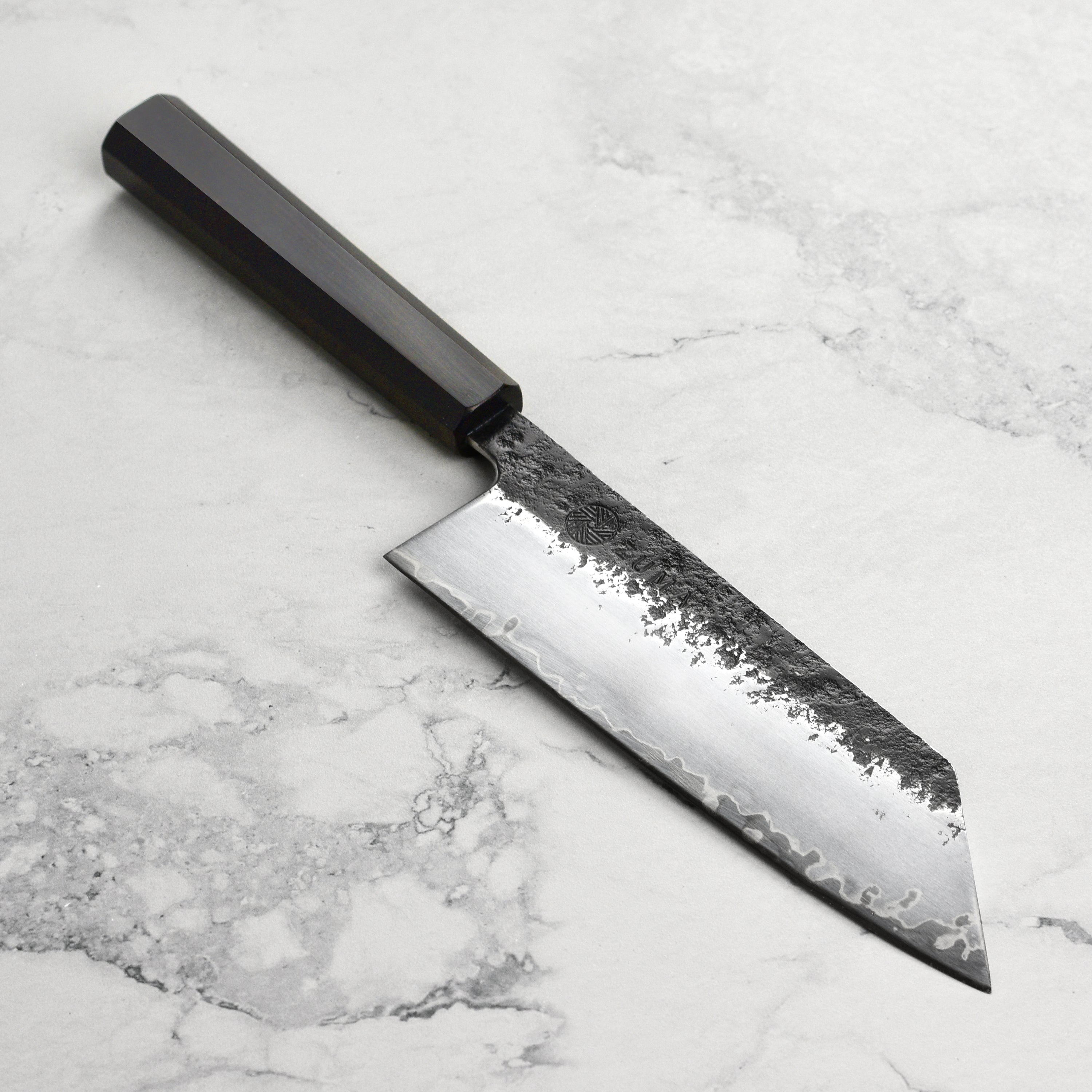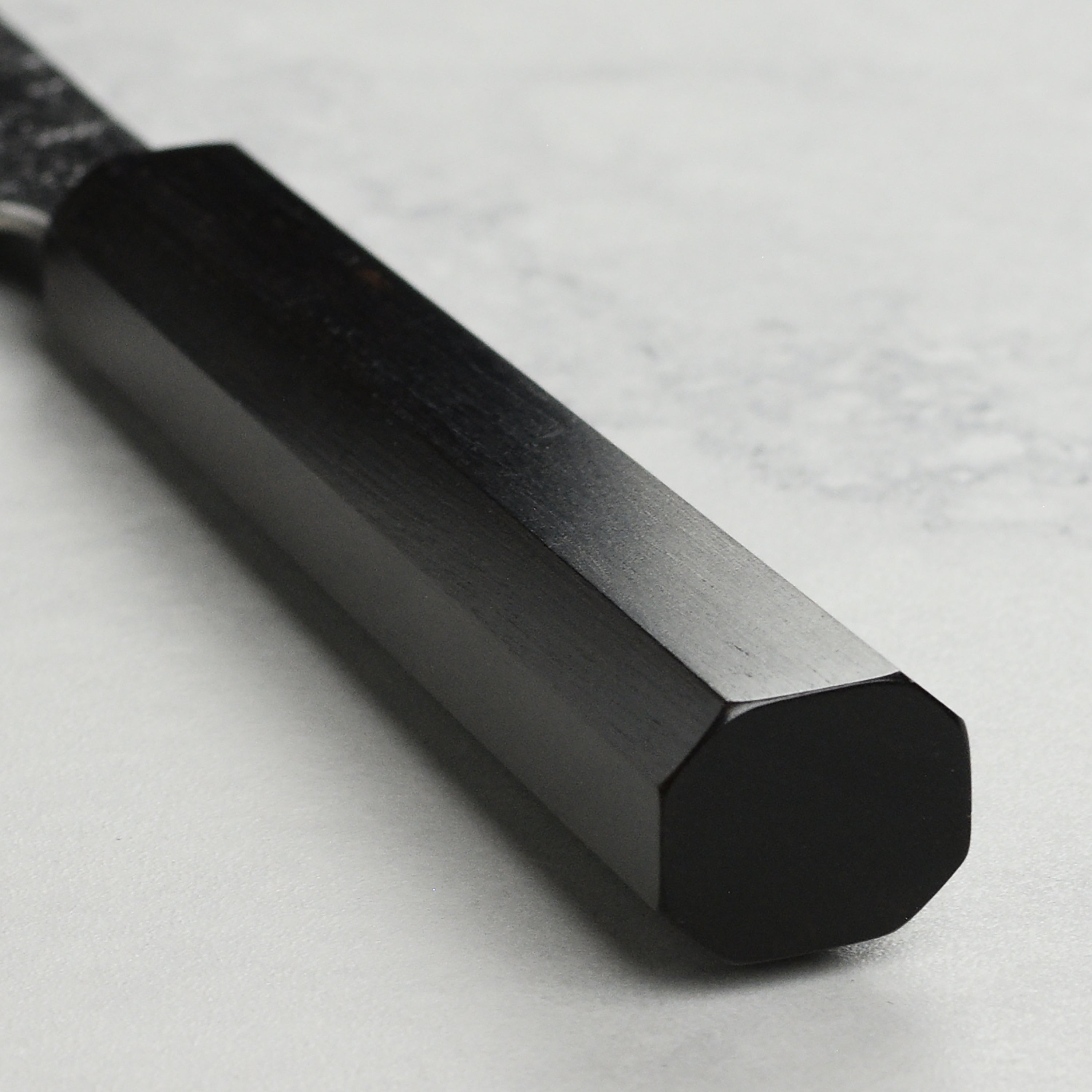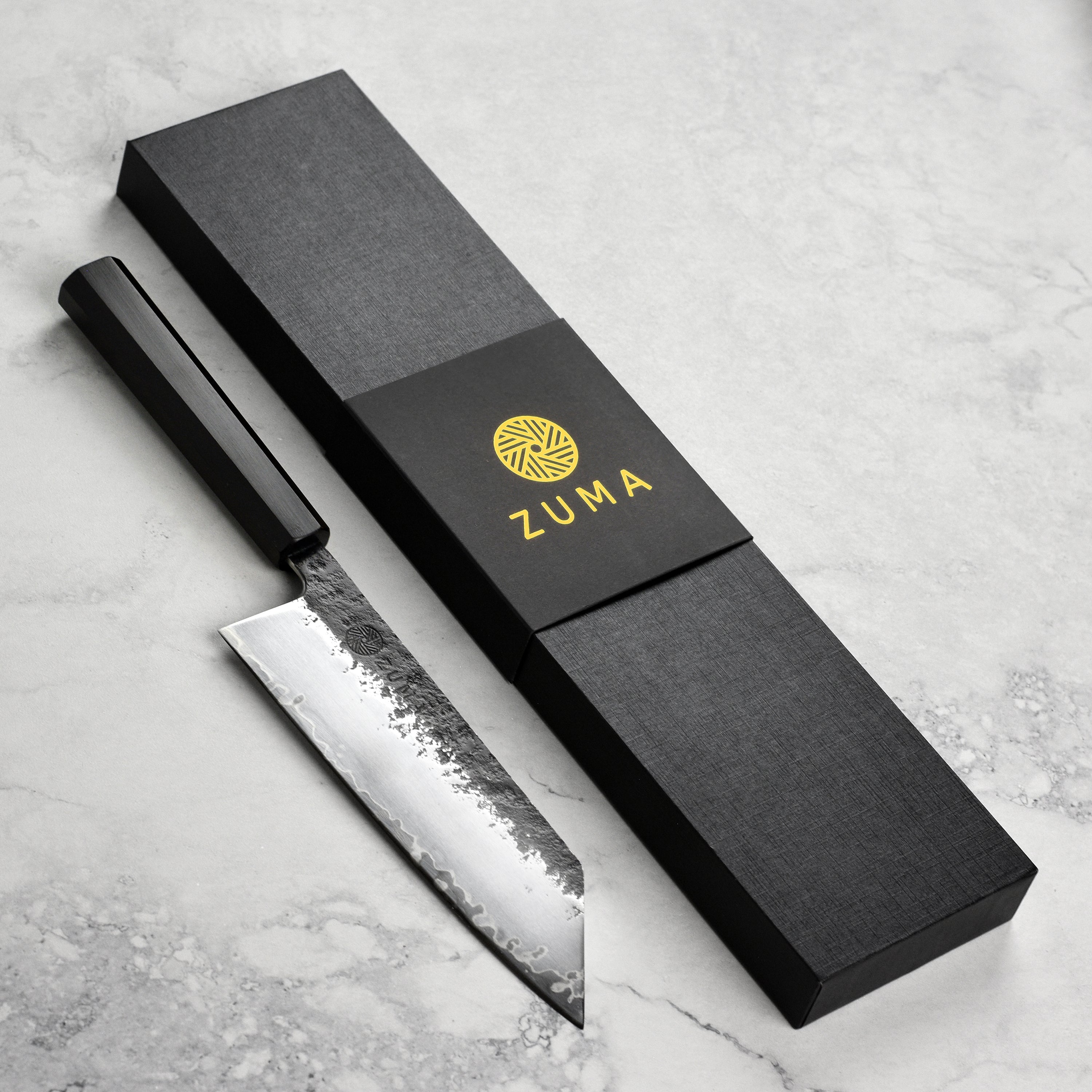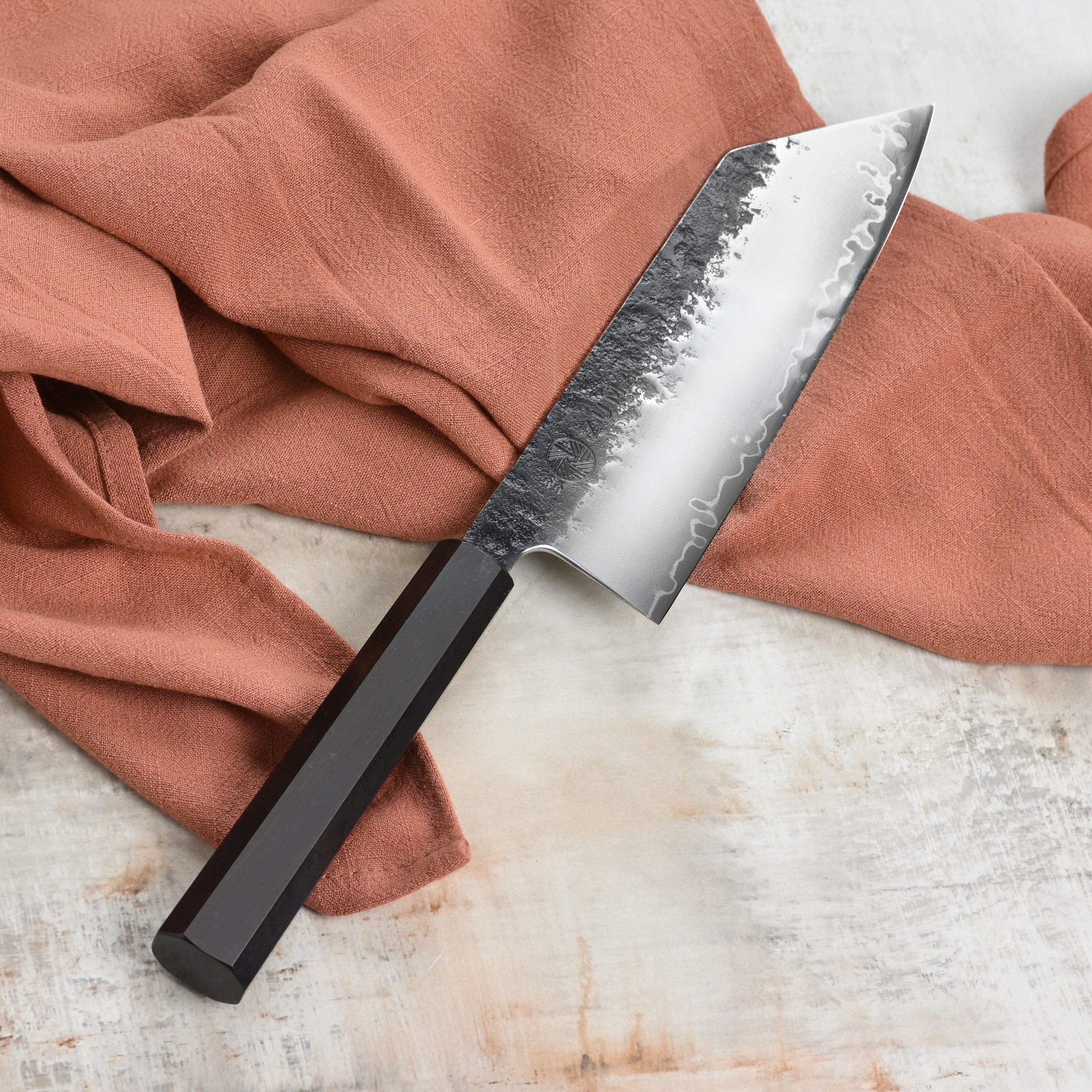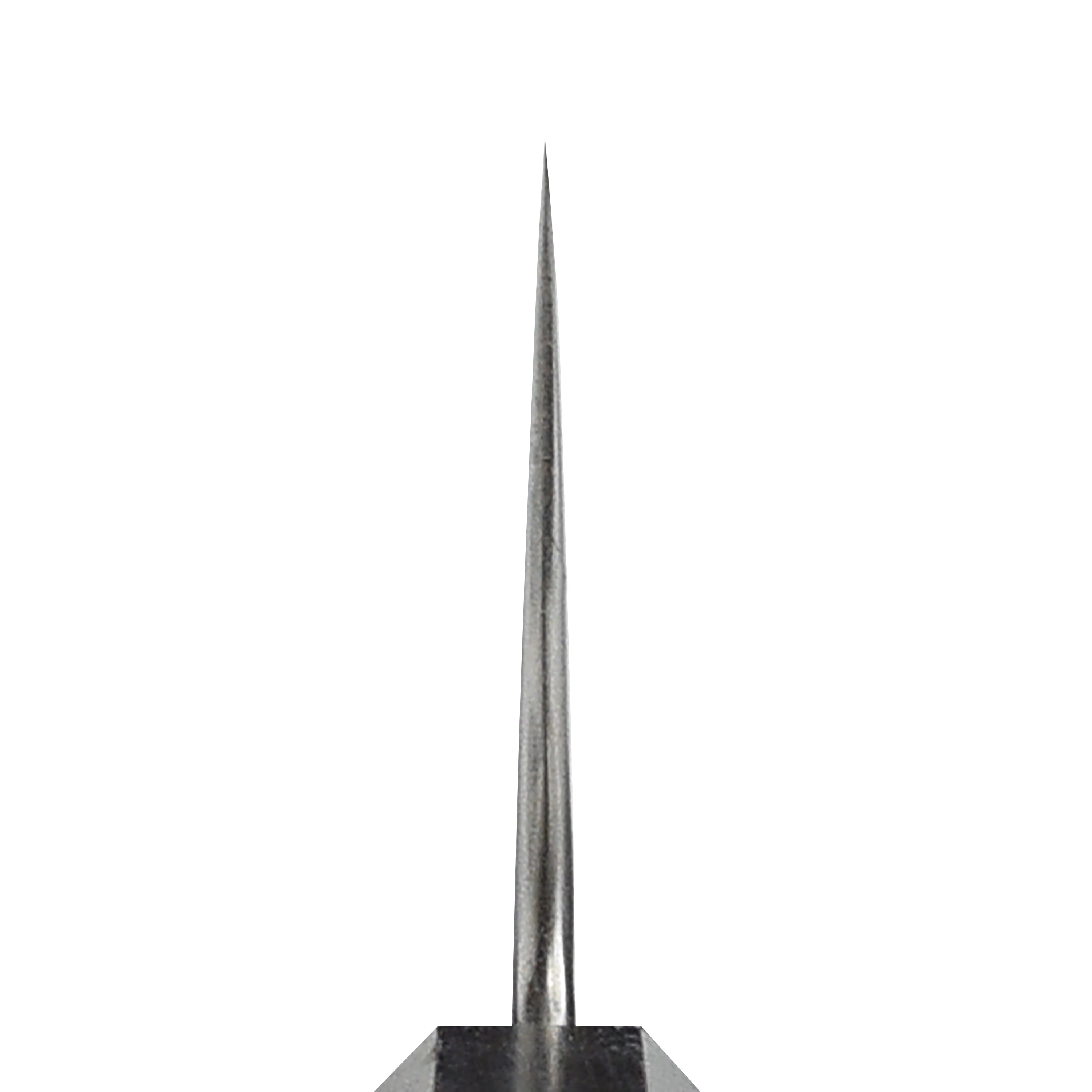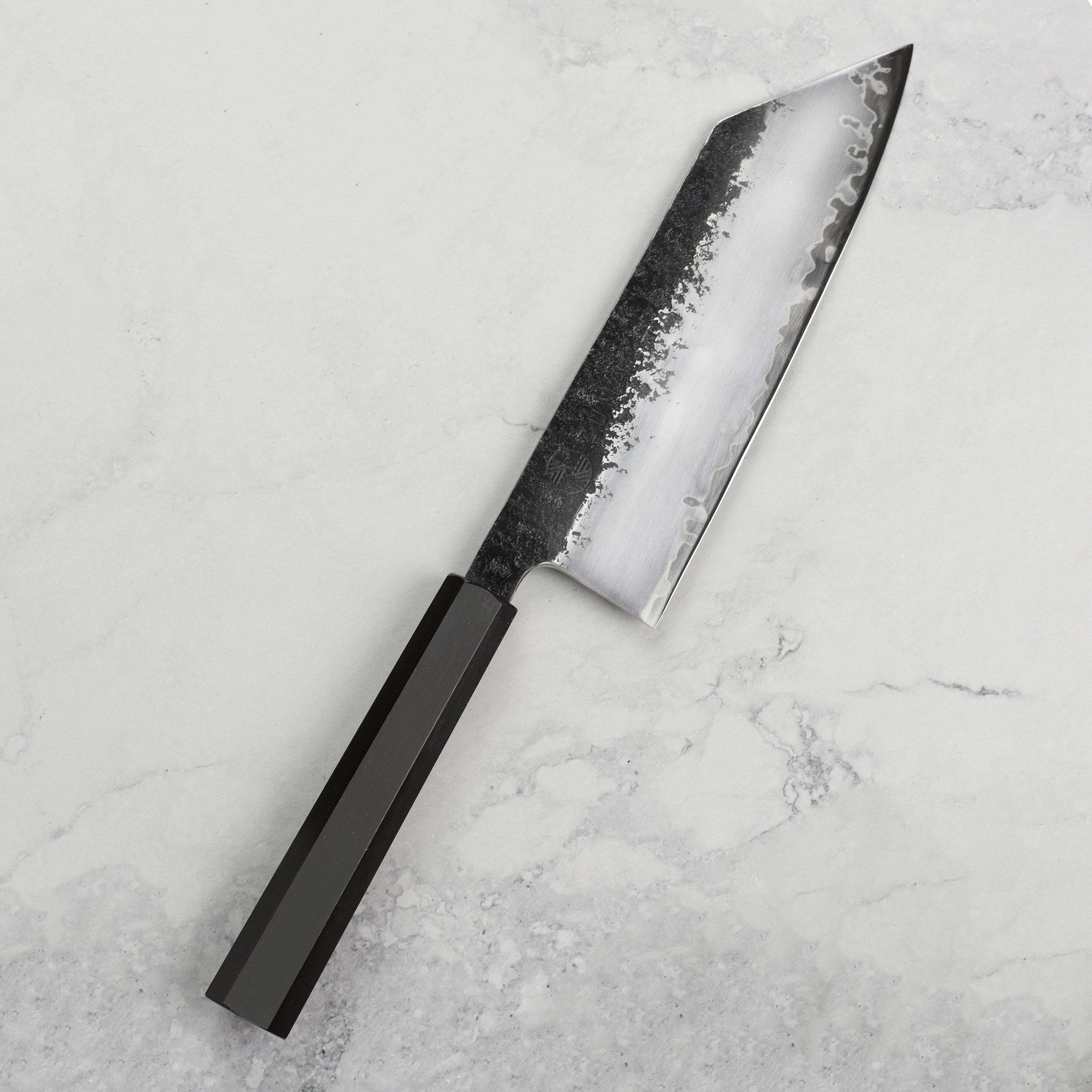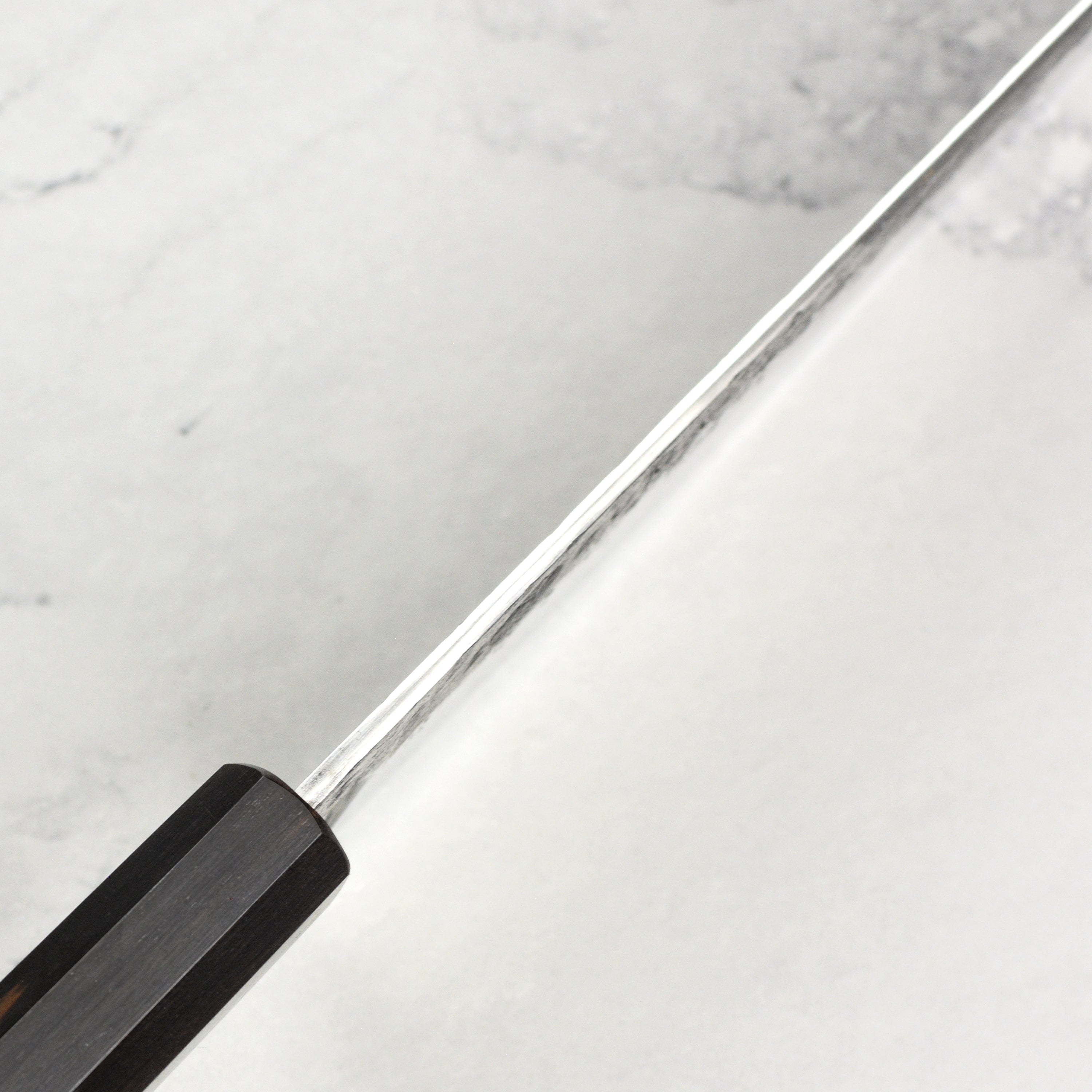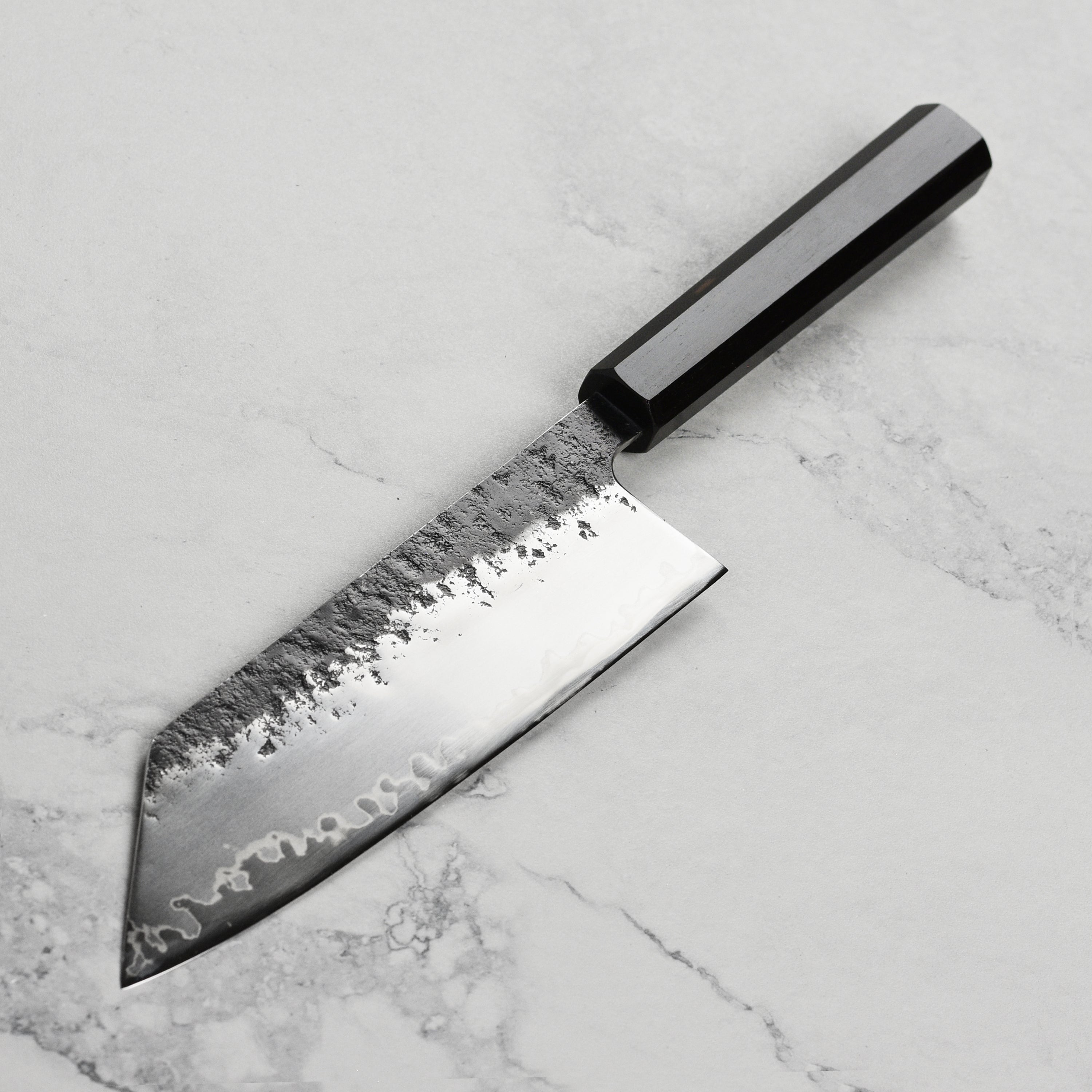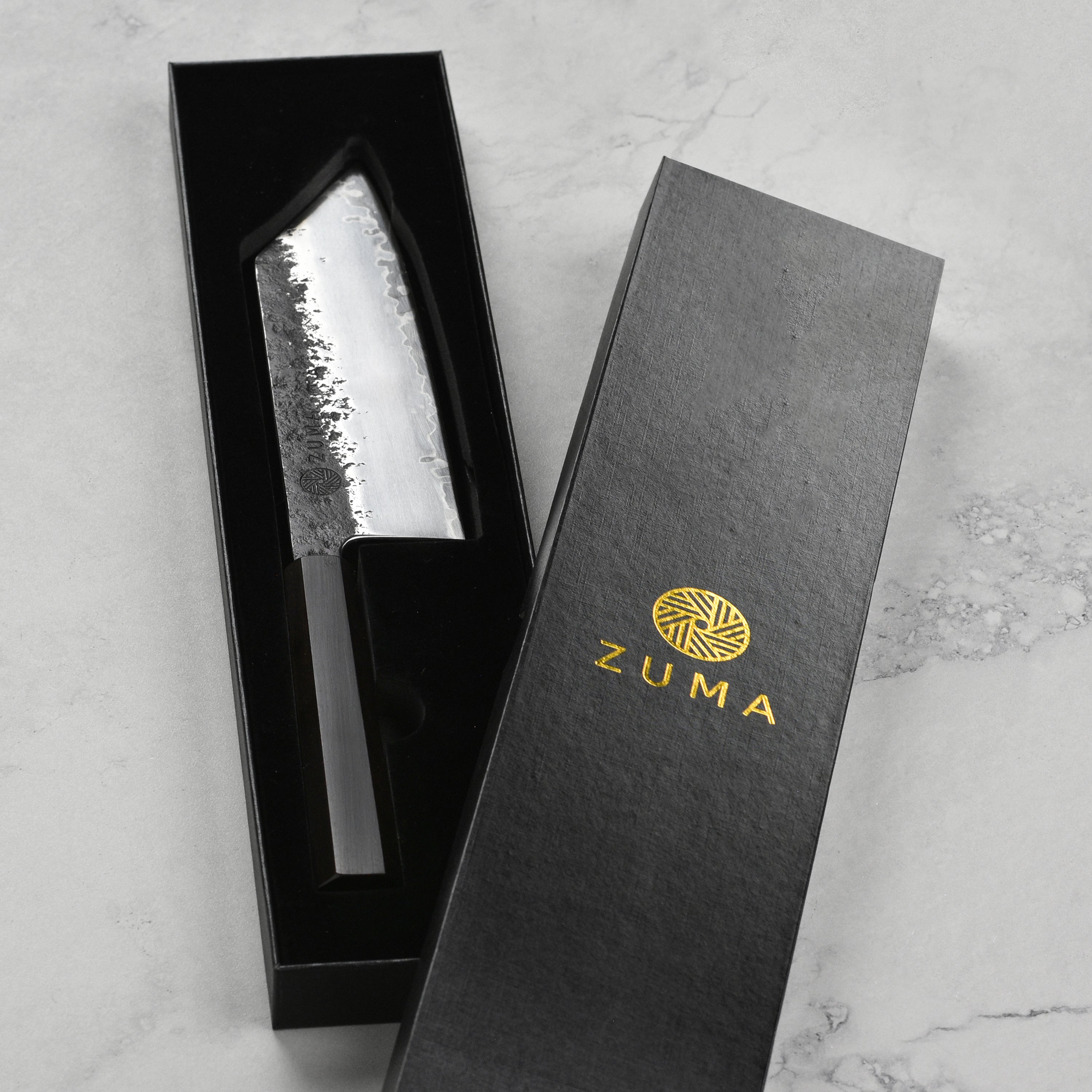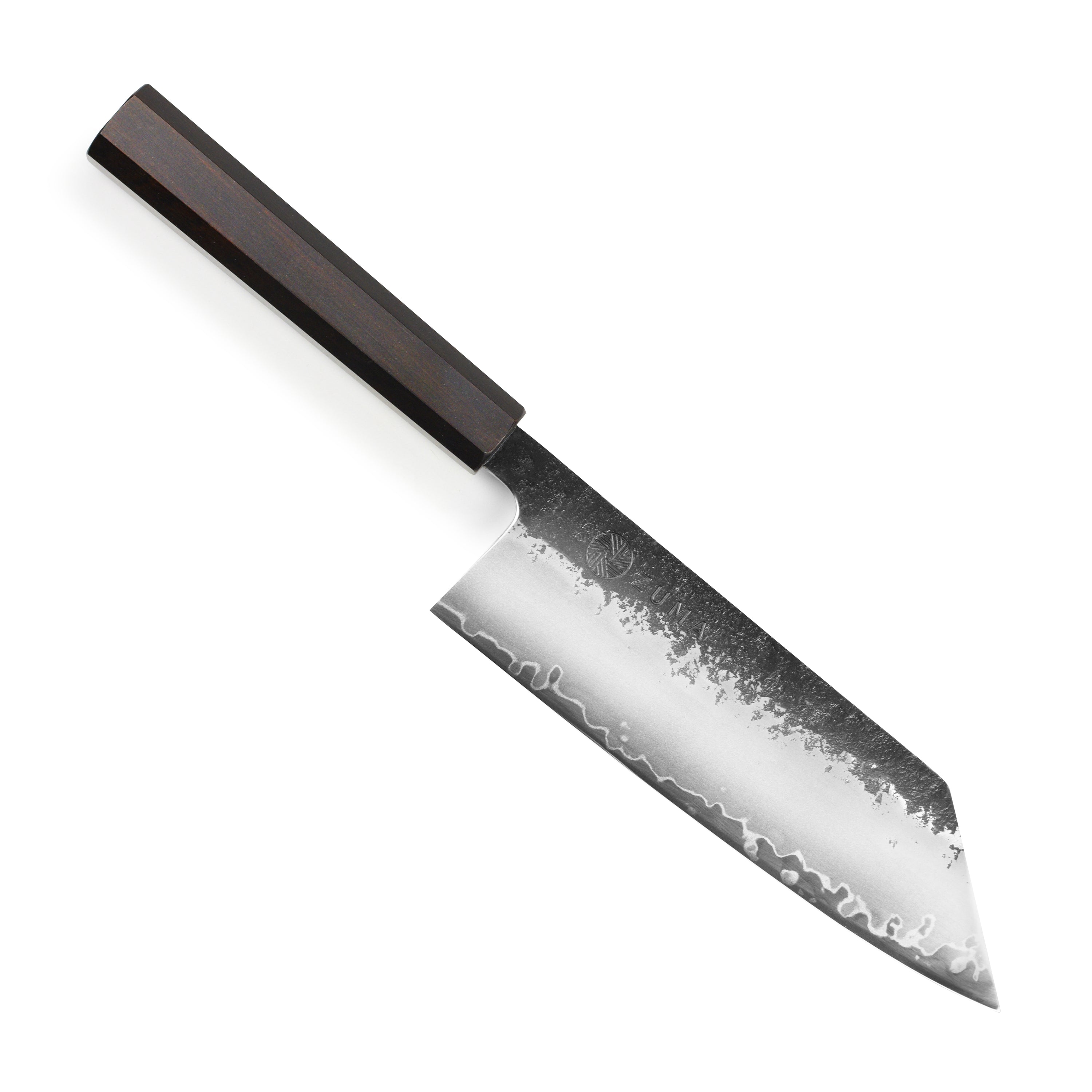Zuma is a Cutlery and More exclusive hammer forged bunka knife that we made sure checks all the boxes on your list for performance, function and feel.
Construction:
First, we insisted that the knife be forged. Although labor intensive, the hammering process is worthwhile due to the increase in strength and ease of sharpening, which is a result of the steel's grain structure becoming better aligned. It also allows for a single, thicker piece of steel to be used. Once we determined that this knife would be forged, we then knew that it must be hand ground and sharpened. A distal taper ensures that the knife will cut smoothly and a convex grind gradually thins out the blade starting right at the spine. This type of blade geometry and balance allows the knife to glide effortlessly through foods. No need to apply lots of pressure, in fact too much pressure may actually be detrimental to the knife's edge as it flies through your ingredients and hits the cutting board.
Profile:
The Zuma 7" Bunka Knife is designed for cooks who value precision and control. Its 2.1" (53mm) blade height provides excellent knuckle clearance and stability during detailed prep work. A pronounced flat section of the edge makes it ideal for vertical and push chopping, while a gentle curve near the tip allows for effortless maneuverability and fluid cuts. The refined kiritsuke-style tip excels at precise slicing and intricate tasks. Slightly thinner than the Zuma Chef’s Knife, it delivers a lighter, more agile feel without sacrificing cutting power.
Steel:
Once we established the above requirements, we were in search of what might be the best steel to use. Our maker recommended to us BG42, which is an American stainless high speed tool steel. After some research and discussion with the blacksmith, we discovered that this steel is ideal for forging and offers a great balance of corrosion resistance, toughness and edge retention. For example, the hardness rating of 61-62 HRC falls in between steels like VG10 and SG2, but has better toughness, which was imperative if we were going to make a knife as thin behind the edge as we reasonably could without making it too fragile.
Finishing:
The finish on the Zuma starts with what is referred to as a "kurouchi" or blacksmith's finish and is a result of the forging process. The durability of kurouchi finishes vary, but the Zuma goes through an additional black dye process that makes it a little smoother and more wear resistant. The mid blade is then ground and polished to a hazy "kasumi" finish, while the very edge is highly polished. This makes for, what we think, is a beautiful overall appearance and enhances the food release throughout. We chose an octagonal ebony handle in the traditional Japanese style that is both smooth and comfortable, yet solid. Last but not least, we made sure that our artisans polish the spine and choil areas of the blade for comfort using any grip.

